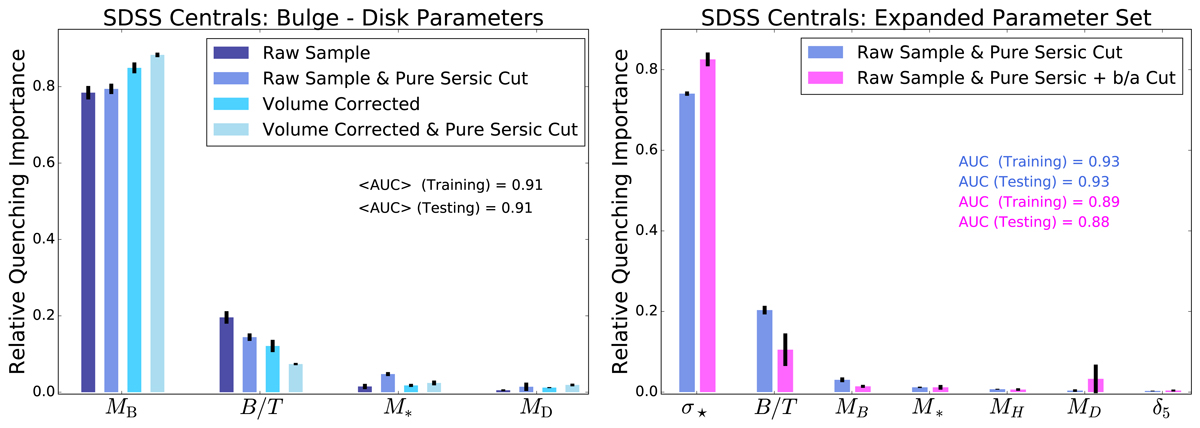Fig. 4.

Download original image
Random Forest classification analysis to predict the quenching of central galaxies in the SDSS. Left panel: random Forest analysis for the bulge-disk parameters (i.e. MB, MD, M* and B/T). The y-axis indicates the relative importance of each parameter for predicting whether central galaxies are star forming or quenched, and the x-axis indicates each parameter used to train the Random Forest in turn (ordered from most to least predictive of quenching). The Random Forest classification analysis is repeated for four different samples: (i) raw data (as in Mendel et al. 2014; ii) raw data with a pure Sérsic cut (defined and motivated in Sect. 2); (iii) 1/Vmax volume weighted sample; (iv) volume weighted sample with pure Sérsic cut. The error on each relative importance for each sample is taken as the dispersion across ten independent training and testing runs. It is clear, and highly significant, that bulge mass is the most predictive parameter governing quenching in all sample variants. Right panel: random Forest analysis for a broader set of parameters, shown for comparison. Here stellar velocity dispersion (σ⋆), dark matter halo mass (MH), and local galaxy over-density (δ5) are added to the bulge–disk parameters. This analysis is performed with the raw (unweighted) sample with Sérsic cuts (shown in blue), and with a sample with an additional cut in axial ratio (shown in magenta). It is clear that σ⋆ is overwhelmingly the most predictive parameter of central galaxy quenching in the expanded data set.
Current usage metrics show cumulative count of Article Views (full-text article views including HTML views, PDF and ePub downloads, according to the available data) and Abstracts Views on Vision4Press platform.
Data correspond to usage on the plateform after 2015. The current usage metrics is available 48-96 hours after online publication and is updated daily on week days.
Initial download of the metrics may take a while.


